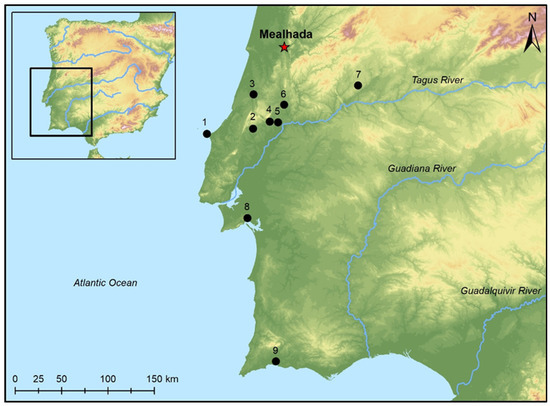The checklist contains 48 autochthonous and two introduced species. Five species underwent taxonomic revisions (Triturus ivanbureschi, T. macedonicus, Pelobates balcanicus, Bufotes viridis and Mediodactylus kotschyi). Two species were added after recent taxonomic splits of species’ complexes (Hyla orientalis and Anguis colchica). Presence of new (Lacerta trilineata) and introduced species (Hemidactylus turcicus) was confirmed during recent fieldwork. There are at least eight more species that can potentially be present in Serbia. The national protection legislative should be updated according to the current checklist. Leer más.





We present the updated distribution data of the Hyla arborea species complex in Serbia. Hyla arborea inhabits all biogeographic regions, while Hyla orientalis inhabits only the easternmost parts of north-eastern, eastern and south-eastern Serbia. Potential hybrid zone encompasses parts of central and southern Serbia from the Đerdap gorge, over Niš to Bosilegrad. Since the taxonomic separation between the tree frog taxa was not yet recognized in national nomenclature, we propose the official Serbian names. Leer más.
Furthermore, evidence for gene flow was also found for currently allopatric species pairs. Genetic exchange among these well-defined, distinct, and several million-year-old reptile species emphasizes that speciation and maintenance of species distinctness can occur despite continued genetic exchange. Leer más.

The results of a review of the chelonian remains retrieved in the excavations carried out in Mealhada (Coimbra, central Portugal) are presented here. Mealhada is a Portuguese Middle Palaeolithic classical site, discovered at the end of the 19th century, and chronologically ascribed to the interglacial Riss-Würm (ca. 120 ka BP). This study has allowed the identification, justification, and figuration of remains attributed to three Iberian chelonian taxa, Testudinidae indet., Mauremys leprosa, and Emys orbicularis, the last one being recognized for the first time in this site. Leer más.

The book treats biological concepts related to the evolution, ecology, physiology, immunology, behaviour, and morphology of amphibians in their different states. This book constitutes an actualized work indispensable for evolutionary ecologists and herpetologists. Ir al enlace. Previsualización.






